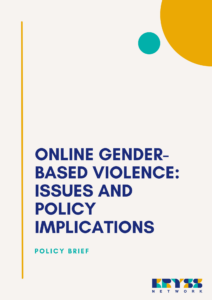
“The internet is like our public street. Just because you got robbed, doesn’t mean you don’t step out again. . . . It is like asking after you have been robbed on the street, why do you go back to the street instead of just staying at your home for your protection.”
– Research Interviewee, “Power x Expression x Violence: A Research on Women’s Freedom of Expression on Social Media in Malaysia, 3rd November 2019
The ubiquity of digital technologies means that there are new ways for gender-based violence to manifest with even greater intensity and reach.
Women and girls face specific threats including rape threats, online sexual harassment, abusive comments, non-consensual dissemination of intimate images (NCII), cyber-flashing, stalking, etc.
Many of these incidents of online GBV (OGBV) are not new and are, in fact, an extension of the forms of GBV experienced by women and girls in the physical world.
Because of the perceived lack of physical violence, OGBV that occurs in the digital domain is often trivialised and seen as less harmful. Yet, emotional or mental forms of violence can manifest physically for the victim.
The costs of online gender-based violence to Malaysia are not apparent only because there is yet to be a more concerted effort in collecting the data and gender disaggregating the data for more efficient analysis. The cost of online gender-based violence to the nation, as a result, is largely invisible except to the individual victims/survivors who experienced the harm.
In the policy brief, we highlighted the costs of online gender-based violence to individuals and the nation.
The elimination of online gender-based violence requires a rethinking of current strategies on gender-based violence as it involves a range of rights between freedom of expression, right to political participation, and right to non-discrimination and safety, which are in turn perceived as competing rights to vested interests in the politics of the country.
The normalisation of gender inequalities, stereotyping of gender roles and responsibilities, sexual harassment, and moral policing lends to the fact that the same challenges in addressing gender-based violence persist in addressing online gender-based violence.
Hence, there is a need for a multi-stakeholder approach and an inter-government agency response to online gender-based violence.
This would require the deployment of multifaceted strategies, from the macro- to the micro-level, involving laws and policy reforms, implementation, and expansion of prevention programs, research, and monitoring, etc.
Read our policy brief to know more!

